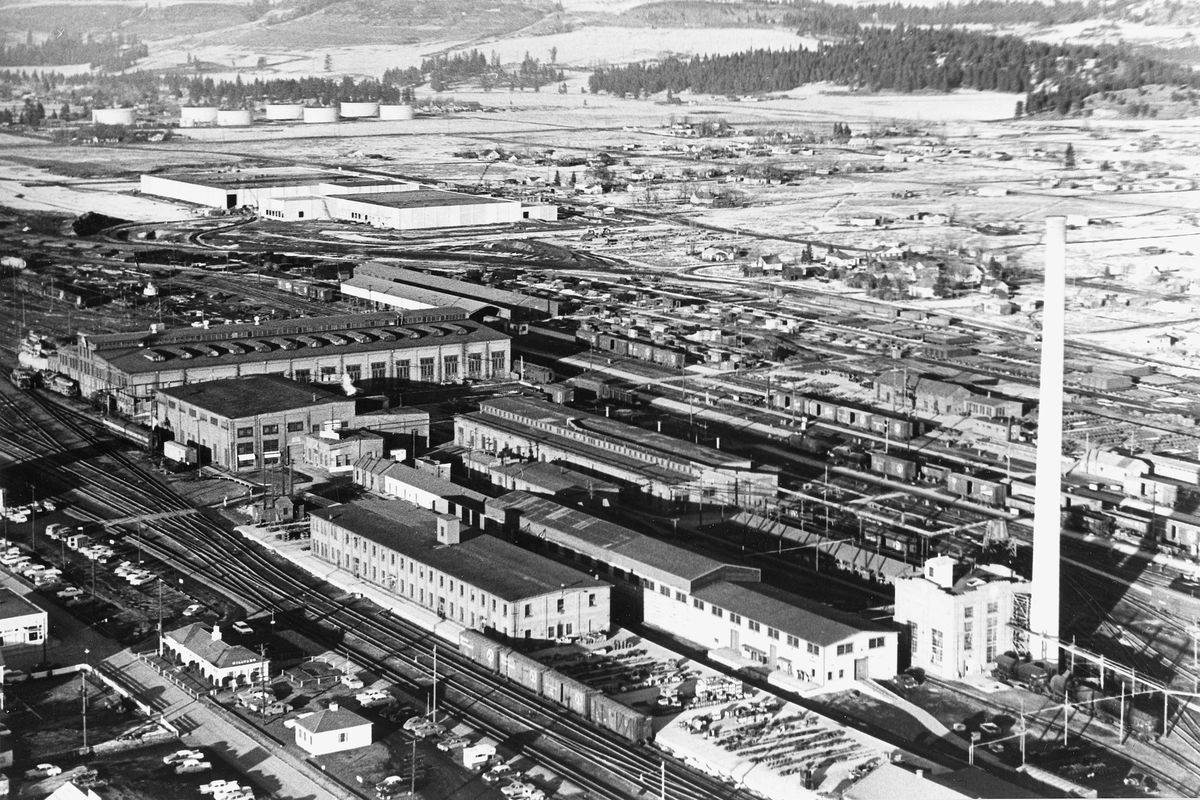Then and Now: Great Northern’s Hillyard rail yard

In the 1880s, Spokane was becoming the premier rail hub of the West and tycoon James J. Hill wanted it on his Great Northern line to the coast. The first GN train rolled into Spokane in May 1892, starting a long association between the company and the city.
Because Hill was trying to catch up to the Northern Pacific and others, he needed a right of way through Spokane. He dropped hints that he could drop shipping rates if he was given the land and rights of way he needed. Although he eventually got the land, the shipping rates, which made everything more expensive in Spokane, never came down. But Hill went on to build a new station on Havermale Island downtown.
Another clever dodge was the placement of the extensive rail yard outside city limits to avoid city taxes. The yard would become the biggest rail shop west of the Mississippi, including a 20-stall engine house and shops to repair engines and rail cars. The Hillyard shops produced the largest and most powerful steam engine to date, the R-1 Mallet, based on the designs of Swiss inventor Anatole Mallet. Between 1927 and 1930, 26 were built there.
It would be another decade or so before diesel-electric engines began to replace steam power. As diesels became common, Hillyard got some of the work, but other repair centers grew, too. In 1968, the GN merged with the Northern Pacific and other lines to form the Burlington Northern. Repair work and jobs were consolidated and moved to other areas of the country, and Hillyard lost hundreds of jobs.
To fight the economic losses, the Hillyard Development Corp. and the Hillyard Historical Society sponsored a tourist train to Newport and back in 1968 to draw people to the historic shop area, which they wanted to turn into a train village or museum. But railroad officials raised rates for the tourist trains and made them unprofitable. Boosters vented their frustration to Louis Mank, the president of the BN in 1970.
“To let Hillyard, the center of early-day railroading here … simply die an economic death while the weeds and debris take over the yards and the old roundhouses – scene of all the early bustle – would be sad and wasteful neglect,” they wrote.
The yards closed for good in the early 1980s. The losses led Hillyard to be one of the poorest neighborhoods, per capita, in the state.
The former shop area is heavily contaminated with lead and other heavy metals from years of industrial activity. Burlington Northern entered the property into Washington state’s voluntary cleanup program in 2004.
– Jesse Tinsley